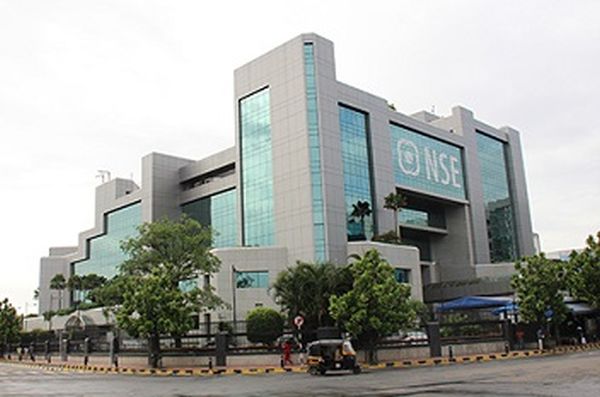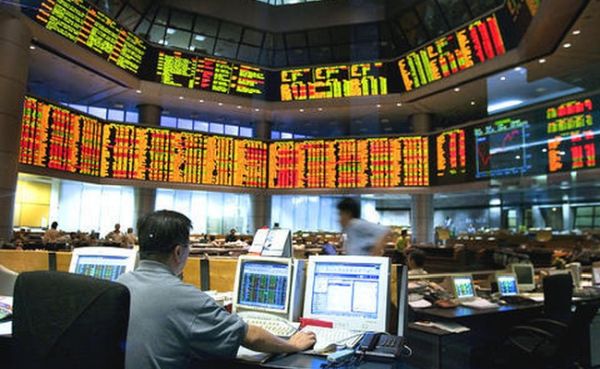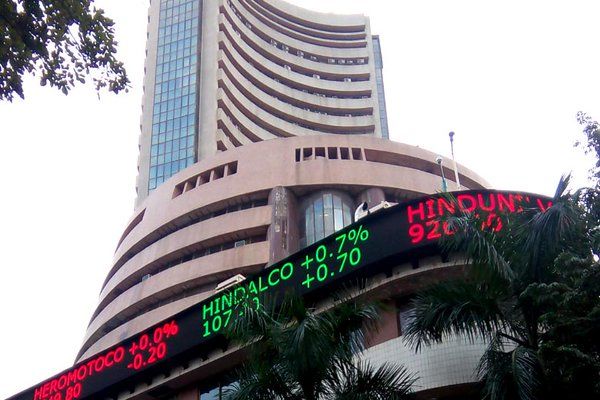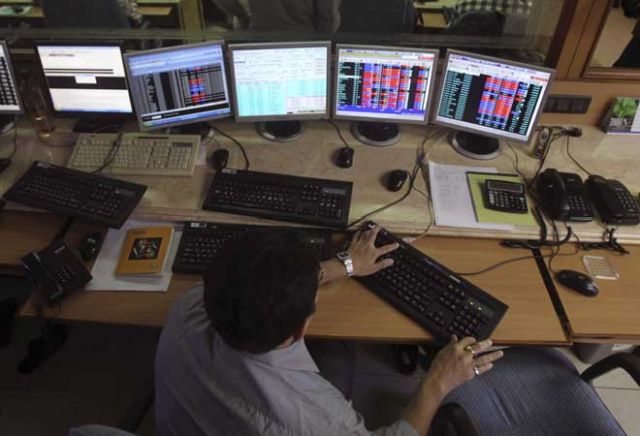
by Editor | May 25, 2021 | Economy, Finance, Markets, News
 By Rohit Vaid,
By Rohit Vaid,
Mumbai : The second-quarter earnings result season, along with the direction of foreign fund flows and macro-economic data points, are expected to determine the trajectory of key Indian equity indices next week.
Market analysts said that crude oil prices coupled with rupee’s strength against the US dollar will also influence the market moves.
“The markets next week would get some sentimental support from stability in INR and crude oil prices,” Devendra Nevgi, Founder and Principal Partner, Delta Global Partners, told IANS.
“The earnings season would be closely tracked as a factor to mitigate some of the volatility in the markets.”
Companies like ACC, Cyient, Reliance Industries, Infosys, Hero MotoCorp, IndusInd Bank and UltraTech Cement are expected to announce their Q2 earning results next week.
“Currently, broader markets look attractive while investors may seek more clarity from upcoming quarterly results,” said Vinod Nair, Head of Research at Geojit Financial Services.
“The continuity of this trend largely depends on stability on bond yields and INR. However, worries about US Fed rate hike, US-China trade dispute and political uncertainties in India on account of upcoming state elections may impact the sentiment in the short-term.”
Apart from the Q2 results, investors will look forward to the macro-economic data points of WPI (Wholesale Price Index) and India’s trade figures.
The Central Statistics Office (CSO) is slated to release the macro-economic data points of WPI on October 15.
“The trade deficit number due next week would be crucial for the INR moves,” Nevgi said.
On a weekly basis, the rupee closed at 73.56 last Friday, strengthening by 21 paise from its previous week’s close of 73.77 per greenback.
In terms of investments, provisional figures from the stock exchanges showed that foreign institutional investors sold scrips worth Rs 8,335.12 crore last week.
At present, outflows in just the nine trading sessions in October have reached over Rs 17,000 crore.
This has been one of the worst months in over a decade in terms of fund outflows.
On technical charts, the National Stock Exchange (NSE) Nifty50 remains in an uptrend as it has closed at new life highs.
“Technically, while the Nifty has bounced back smartly, the intermediate trend remains down,” HDFC Securities’ Retail Research Head Deepak Jasani told IANS.
“The downtrend is likely to continue once the immediate support of 10,138 points is broken. Crucial resistances to watch on the upside are at 10,492-10,605 points. A break of 10,866 points would change the trend of the Nifty.”
Last week, both the key Indian equity indices — S&P Bombay Stock Exchange (BSE) Sensex and the NSE Nifty50 — came in for some rough weather due to global worries over high crude oil prices and US interest rates during the period, but managed to catch the upside in the final session of trade.
The market swung widely with major losses of over 2 per cent in just one session — thereby pulling stock prices and the Indian currency lower.
Notwithstanding the general downturn, a timely plunge in crude oil prices, attractive valuations and liquidity infusion by the Reserve Bank of India (RBI) lured investors back to the Indian market.
Consequently, the S&P BSE Sensex closed at 34,733.58 points, up 353.54 points or 1.02 per cent from its previous close.
Similarly, the wider Nifty50 of the National Stock Exchange also made gains. It closed at 10,472.50 points, up 156.05 points or 1.51 per cent from the previous week’s close.
(Rohit Vaid can be contacted at rohit.v@ians.in)
—IANS

by Editor | May 25, 2021 | Banking, Economy, Finance, Markets, News
 By Rituraj Baruah,
By Rituraj Baruah,
Mumbai : The domestic equity market’s movement in the coming week will be driven by the rupee’s movements well as futures and options expiry, besides the message from the Finance Minister’s meeting with the heads of public sector banks (PSBs).
Market analysts feel the indices could offer some relief in the upcoming week, after largely bearish trade last week.
Movement in the rupee would be a factor in the market, they said. On Tuesday, the Indian rupee touched a new low of 72.91 per US dollar, although it recovered somewhat later.
Concerns over the US-China trade war would also impact the global and domestic market sentiments. On Friday, China cancelled talks with the US after the latter imposed more tariffs on Chinese imports.
According to reports, a White House official has said the US is optimistic about finding a way forward in the ongoing trade dispute with China.
“Global headwinds are also subsiding slowly. Hence, the market may shake off its earlier losses to witness new highs,” said Prateek Jain, Director of Hem Securities.
He, however, added: “Amidst the global optimism, the market could witness a little volatility as traders adjust their positions on account of monthly derivatives expiry, which is scheduled to take place on Thursday, September 27.
“Further, there will be some buzz from the banking sector, as investors will keep an eye on the meeting of the Finance Ministry and top management of the public sector banks on September 25.”
Technically, for the Nifty50 on the National Stock Exchange (NSE), 11,050 points would be a major support level while immediate resistance level would be 11,250 points, said Deepak Jasani, Head of Retail Research at HDFC Securities.
In the week gone by, the Indian equity market slumped over three per cent due to a depreciating rupee along with high oil and credit risk concerns.
On a weekly basis, the Sensex of the Bombay Stock Exchange (BSE) closed at 36,841.60 points, lower by 1,249.04 points or 3.28 per cent from the previous week.
Similarly, the wider Nifty50 on Friday closed at 11,143.10 points, down 372.1 points or 3.23 per cent from the previous week’s close.
In terms of investments, provisional figures from the stock exchanges showed that foreign institutional investors (FIIs) sold scrips worth Rs 2,674.12 crore, while the domestic institutional investors (DIIs) bought Rs 1,782.63 crore worth of stocks in the truncated week.
According to National Securities Depository (NSDL) figures, foreign portfolio investors (FPIs) divested Rs 2,231.37 crore, or $306.04 million, in the equities segment during the week ended September 21.
On the currency front, the Indian rupee closed at 72.20 a US dollar on Friday, depreciating 35 paise from the previous week’s close of 71.85.
(Rituraj Baruaah can be contacted at rituraj.b@ians.in)
—IANS

by Editor | May 25, 2021 | Banking, Economy, Finance, Markets, News
 By Rohit Vaid,
By Rohit Vaid,
Mumbai : The Central government’s measures to arrest the drastic fall in rupee are expected to steer the equity market trajectory next week.
In addition, market observers opined that high crude oil prices along with global cues on trade protectionist measures will impact investors’ risk-taking appetite.
However, a positive reaction is expected from investors on the various measures announced by Finance Minister Arun Jaitley to curb the widening current account deficit, besides a policy to limit non-essential imports and to encourage exports.
The Minister had said the government is committed to maintain its fiscal deficit target even as it monitors the impact of external factors on the Indian economy.
Devendra Nevgi, Founder and Principal Partner, Delta Global Partners, said: “Next week’s sentiment would be dominated by the announcements made by the government to rein in current account deficit and encourage foreign flows.
“Measures taken, though not drastic, would have a soothing effect on the INR sentiment in the short term… but would not open the floodgates for foreign flows.”
In recent days, geo-political developments over trade protectionist measures along with high crude oil prices and outflows of foreign funds have pulled the Indian rupee to fresh record intra-day and closing lows.
“Despite sharp fall in rupee and consolidation in domestic markets, we are outperforming other emerging markets. The reasons for this are revival in domestic earnings growth, better economic data and softening of CPI,” said Vinod Nair, Head of Research at Geojit Financial Services.
“However, some risk factor like surge in oil prices, strengthening of dollar and escalation of trade wars are creating headwinds for the markets. Considering this, market is expected to be volatile in the near term. For the week ahead, markets will closely monitor the outcome of economic review meeting this weekend.”
Last week, the Indian rupee touched a fresh low of 72.91 a US dollar. However, towards the end of the week it recovered to close at 71.85 on Friday, weaker by 12 paise from its previous week’s close of 71.73 per greenback.
“Unless some fresh measures are announced next week, risk remains that rupee can depreciate once again. The just announced measures, though are significant in streamlining inflows through the respective markets, will do little to help the rupee right now,” said Anindya Banerjee, Deputy Vice President for Currency and Interest Rates with Kotak Securities.
“Rupee will be driven by trend of EM currencies against USD, oil prices and RBI intervention. We expect volatility to increase and a wide range of 71.50 to 73 is expected over next week.”
Besides, the direction of foreign fund flows is likely to impact the trajectory of equity market.
In terms of investments, provisional figures from the stock exchanges showed that foreign institutional investors sold scrip worth Rs 2,291.87 crore in the past week.
Figures from the National Securities Depository (NSDL) suggested that foreign portfolio investors (FPIs) divested Rs 3,076.38 crore, or $424.03 million, in the equities segment during the week ended September 14.
On technical levels, the underlying intermediate trend of the National Stock Exchange (NSE)’s Nifty50 “remains up”.
“Technically, while the Nifty has corrected this week, the intermediate trend of the Nifty remains up,” said Deepak Jasani, Head of Retail Research for HDFC Securities.
“The uptrend is likely to resume once the immediate resistance of 11,760 points is taken out. Crucial supports to watch on the downside are at 11,431-11,250 points.”
On a weekly basis, persistent depreciation in the Indian rupee along with high crude oil prices pulled the domestic equity market lower for the second consecutive week.
Consequently, the barometer S&P BSE Sensex closed at 38,090.64 points, lower 299.18 points or 0.77 per cent from its previous close.
Similarly, the wider Nifty50 on the National Stock Exchange on Friday ended at 11,515.20 points, down 73.9 points or 0.63 per cent from the previous week’s close.
(Rohit Vaid can be contacted at rohit.v@ians.in)
—IANS

by Editor | May 25, 2021 | Economy, Markets, News
 By Rohit Vaid,
By Rohit Vaid,
Mumbai : The upcoming macro-economic data points on industrial production and inflation, along with the escalation in US-China trade war, are expected to determine the trajectory of key Indian equity indices next week.
According to market observers, factors such as global crude oil prices, combined with the rupee’s movement against the US dollar and the direction of foreign fund flows, will also impact investors’ risk-taking appetite.
Investors are expected to closely follow the macro-economic data points such as the IIP (Index of Industrial Production) and Balance of Trade figures.
The Central Statistics Office (CSO) is slated to release the macro-economic data points of IIP and CPI (consumer price index) on September 12, Wednesday.
“Next week is loaded with macro-data releases such as IIP, CPI, WPI (Wholesale Price Index) and, more importantly, the trade deficit for August. The CPI release would influence the next RBI (Reserve Bank of India) moves in the month of October,” Devendra Nevgi, Delta Global Partners Founder and Principal Partner, told IANS.
Besides macro-data, escalation in global trade protectionist measures, as well as high crude oil prices are expected to exert pressure on the Indian rupee in the coming week. Any further depreciation in the rupee’s value is expected to have a negative impact on the domestic indices.
Anindya Banerjee, Deputy Vice President for Currency and Interest Rates with Kotak Securities, said the Indian rupee is expected to remain under pressure as the US dollar could rise after US jobs data “surprised positively”.
“At the same time, US President has hinted at fresh set of tariffs on China. Both these news items can drive rupee lower. We expect a range of 71.60-72.60 on spot,” Banerjee told IANS.
The Indian rupee breached the 72 per US dollar-mark for the first time during the week ended on Friday.
The rupee ended the week at 71.73 to a USD — 73 paise weaker from its previous corresponding close of 71 per greenback.
“The currency has depreciated by 13 per cent YTD, while the 10-year yield has breached the eight per cent-mark during the week. Given these factors and the widening fiscal deficit, RBI is likely to consider a hike in interest rate in the near future,” said Vinod Nair, Head of Research at Geojit Financial Services.
“Additionally, investors will be keen on the upcoming CPI inflation and US unemployment data to get some cues on market direction.”
In terms of investments, provisional figures from the stock exchanges revealed that foreign institutional investors sold scrips worth Rs 789.60 crore and the domestic institutional investors bought stocks worth Rs 1,167.85 crore in the past week.
Technical charts showed that National Stock Exchange (NSE) Nifty50’s intermediate trend remains bullish.
“Technically, while the Nifty has corrected this week, the intermediate trend of the Nifty remains up,” said Deepak Jasani, Head of Retail Research for HDFC Securities.
“The uptrend is likely to resume once the immediate resistance of 11,760 points is taken out. Crucial supports to watch on the downside are at 11,393-11,340 points.”
Last week, depreciation in the rupee’s value and high crude oil prices dragged the Indian equity market lower.
Accordingly, the S&P Bombay Stock Exchange (BSE) Sensex closed at 38,389.82 points, lower 255.25 points or 0.66 per cent from its previous close.
Similarly, the wider NSE Nifty50 closed lower. It ended at 11,589.10 points, down 91.4 points or 0.78 per cent from the previous week’s close.
(Rohit Vaid can be contacted at rohit.v@ians.in)
—IANS

by Editor | May 25, 2021 | Banking, Economy, Markets, News
 By Rohit Vaid,
By Rohit Vaid,
Mumbai : Escalating geo-political tensions following further trade protectionist measures, coupled with high crude oil prices and the rupee’s movement against the US dollar will determine the trajectory of the Indian equity markets in the coming week, analysts said.
According to market observers, other factors such as the direction of foreign fund flows along with healthy GDP growth numbers and the upcoming macro-data points are also expected to influence investors’ sentiments.
“The higher GDP growth rate numbers is likely to buoy the sentiments in the markets, though the infrastructure output slowed down and fiscal deficit rose,” Devendra Nevgi, Delta Global Partners Founder and Principal Partner, told IANS.
“The PMI (Purchasing Managers’ Index) and the auto numbers will be closely watched, after the higher GDP growth rate.”
Apart from last week’s GDP growth numbers, trends in global markets and the rupee’s movement against the US dollar will dictate trend of key indices.
“Macro-economic data, trend in global markets, the movement of rupee against the US dollar and crude oil price movement will dictate trend on the bourses in the near term,” SMC Investments and Advisors’ Chairman and Managing Director D.K. Aggarwal told IANS.
In recent days, geo-political developments have pulled the Indian rupee to fresh intra-day and closing lows.
On Friday, the Indian rupee plunged to over 71 — the lowest-ever mark — against the greenback, surpassing the previous record low of 70.85 to a US dollar.
The Indian currency closed last Friday’s trade at a new record low of 70.99-71 per dollar, 25 paise weaker than its previous close of 70.74 per greenback.
Rushabh Maru — Research Analyst at Anand Rathi Shares and Stock Brokers — told IANS: “Strong reading of India GDP data may provide some relief to rupee. However, any appreciation in the rupee would be temporary as importers may rush to cover their unhedged exposure on any appreciation opportunity.
“Exporters are likely to refrain from selling US dollars at this juncture as there are talks of rupee moving towards 72-73 levels.”
Besides the rupee, the direction of foreign fund flows will also set the course for the key indices.
In terms of investments, provisional figures from the stock exchanges showed that foreign institutional investors sold scrips worth Rs 2,028.47 crore during August 13-16.
“Domestic market may see some more consolidation in the near term given sharp rally in last two weeks,” said Vinod Nair, Head of Research at Geojit Financial Services.
“However, we expect the downside is limited given improvement domestic macros and revival in corporate earnings.”
Last week, firm global cues lifted the Indian equity market for the sixth consecutive week as both S&P BSE Sensex and NSE Nifty50 rose by over one per cent.
Accordingly, the S&P BSE Sensex closed at 38,645.07 points, higher 393.27 points or 1.03 per cent from its previous close.
Similarly, the wider Nifty50 on the National Stock Exchange ended last Friday’s trade session at 11,680.50 points, higher 123.40 points or 1.07 per cent from the previous week’s close.
(Rohit Vaid can be contacted at rohit.v@ians.in)
—IANS





